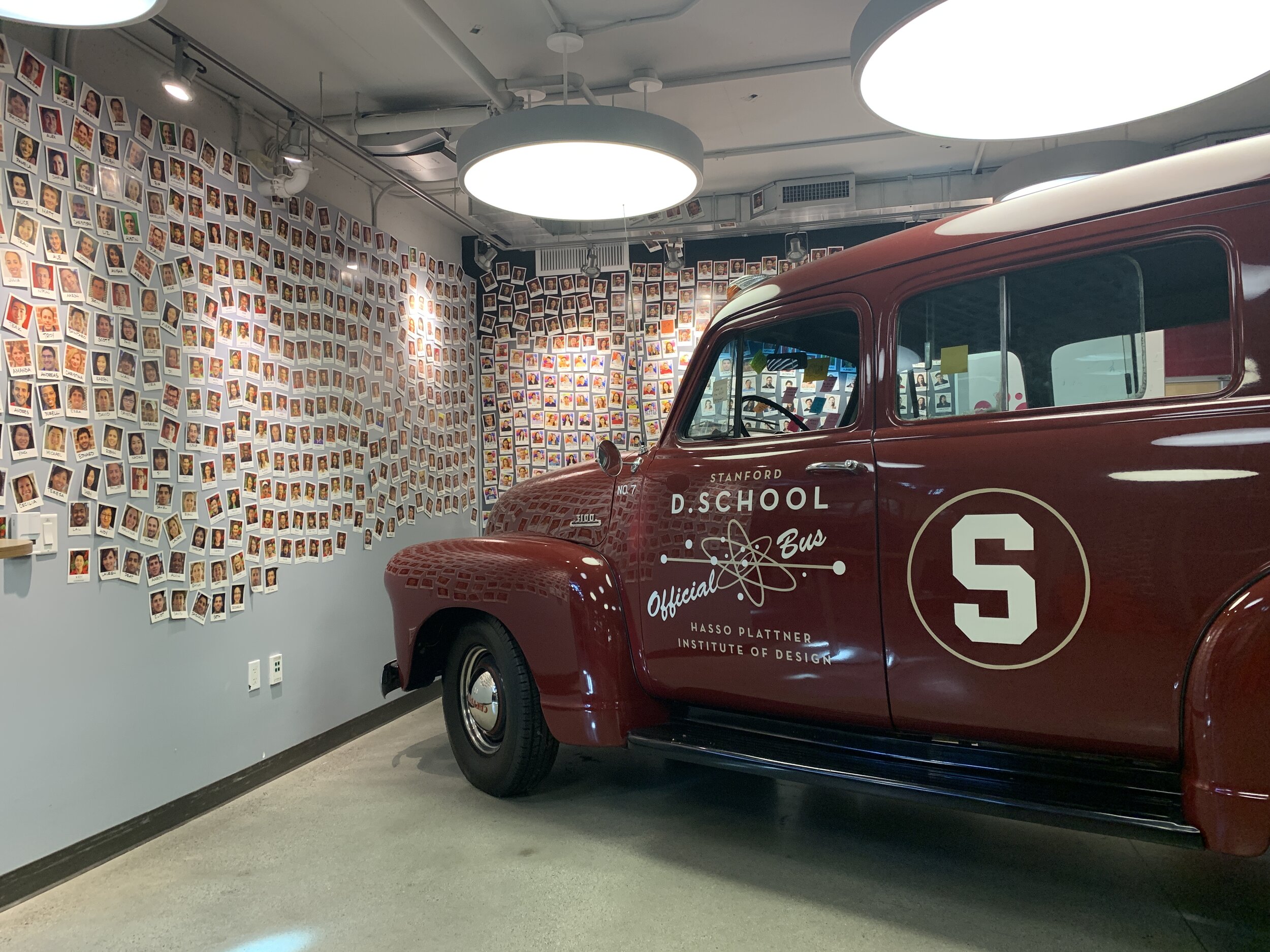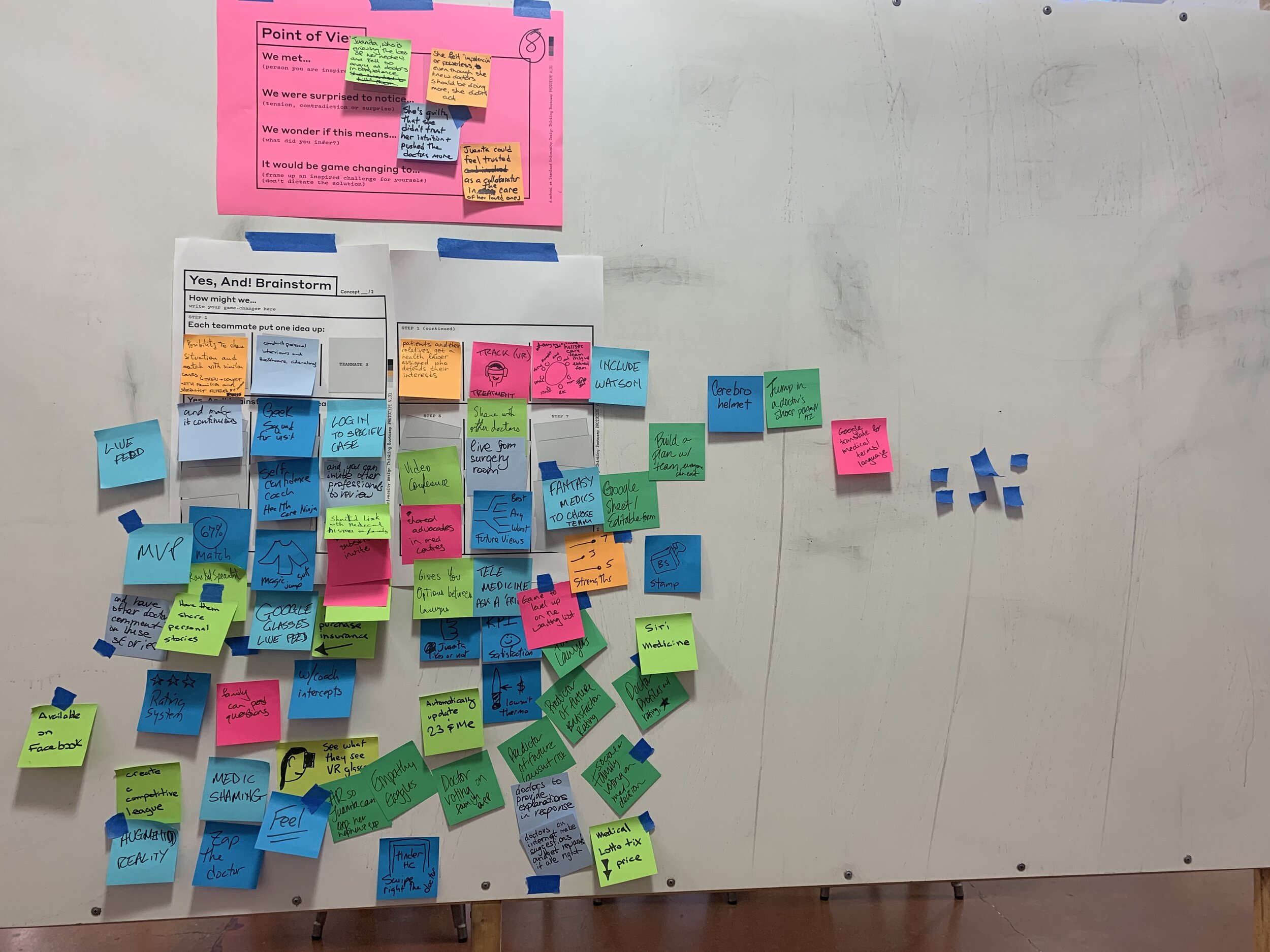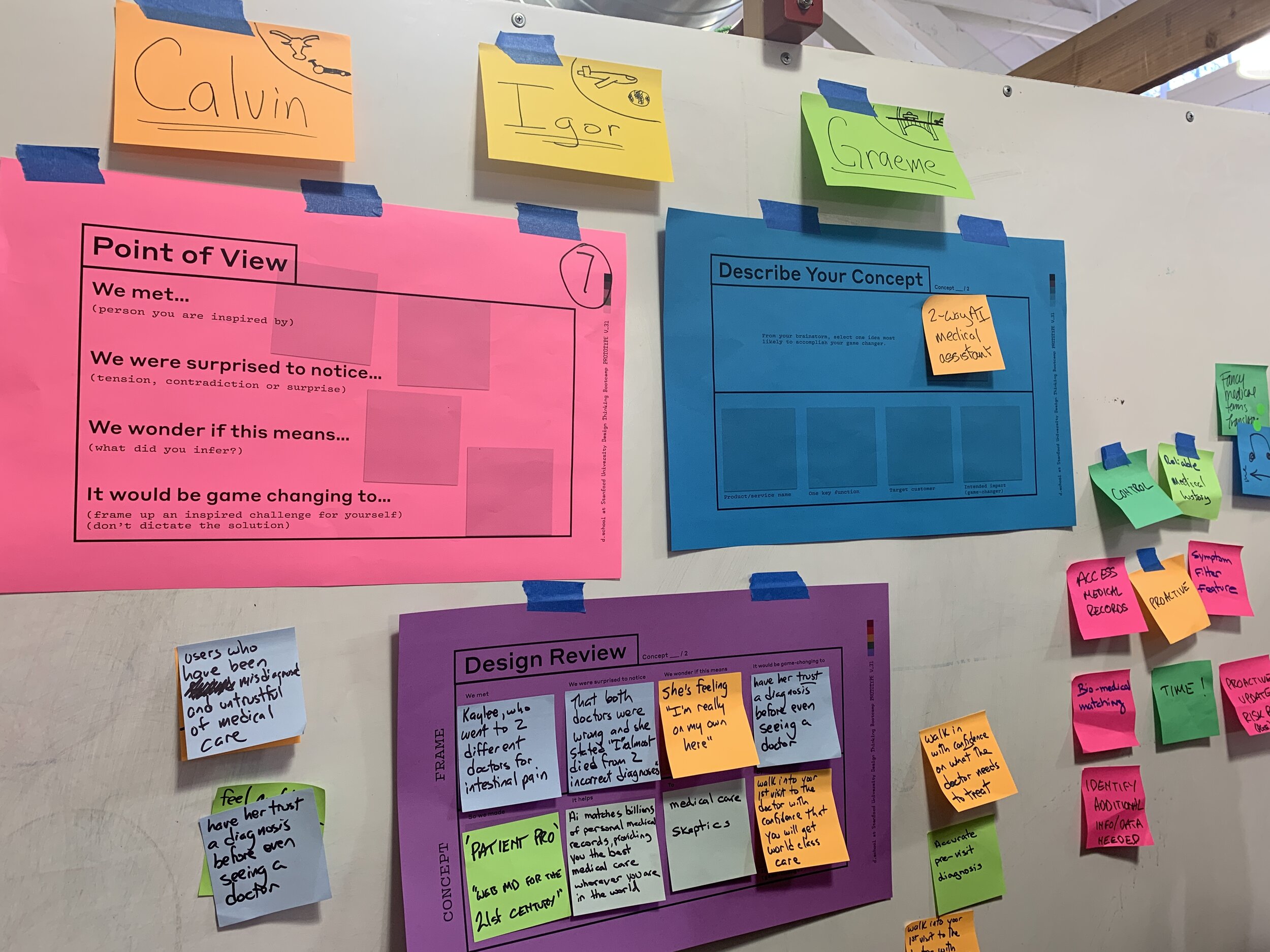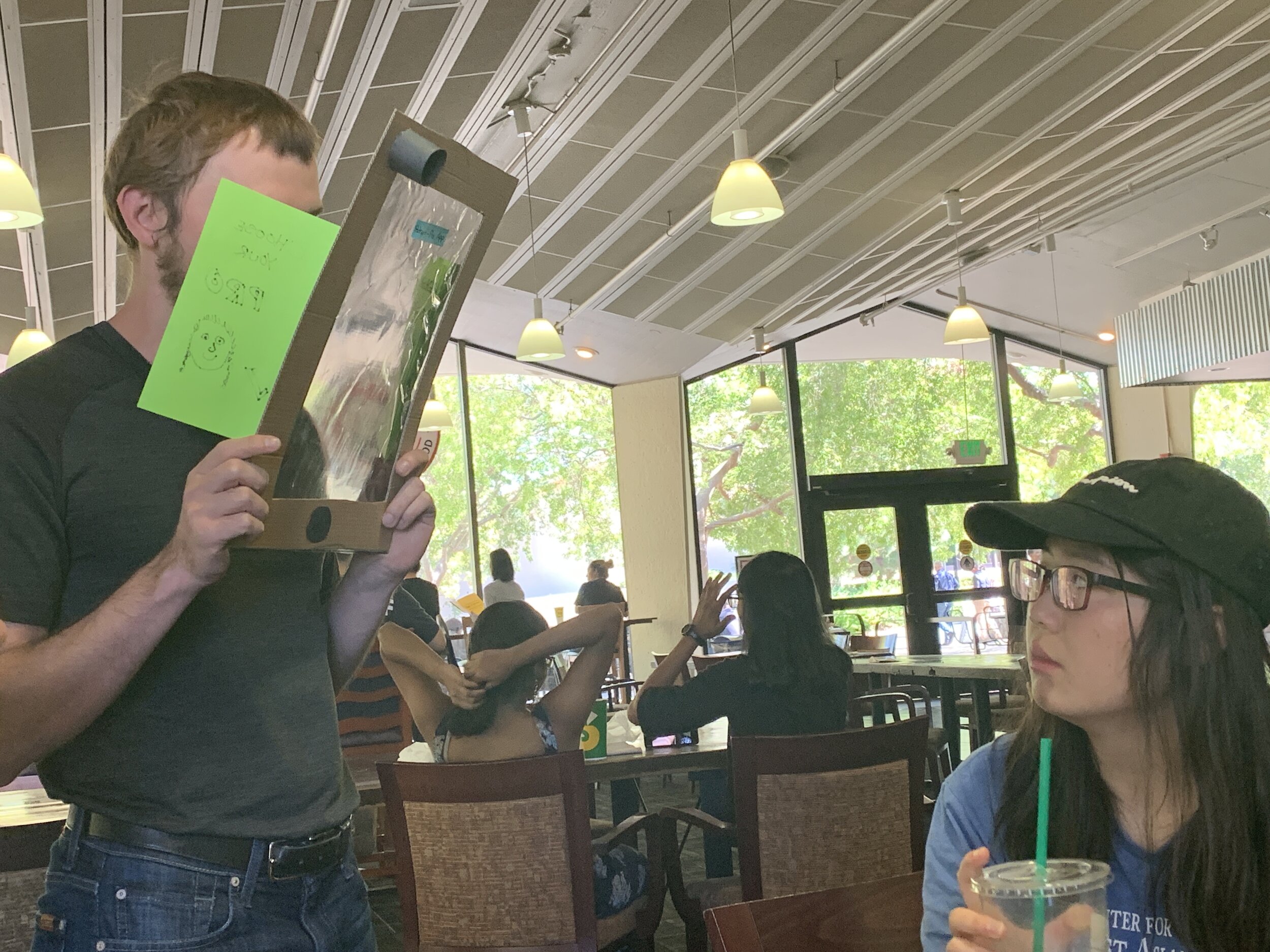
d.school: The Coaching Experience
Practicing Stanford’s methodology for design and innovation is truly transformational. The experience also encourages students and coach / instructors to reach even further by applying (and transcending) shared methods to create new methods, concepts, and prototypes to challenge both the student and instructor to consider continued improvement and expansion of methodology and applications…

d. School Cohort v34
During the onset of COVID, we had to transition from live in-person sessions, to virtual sessions, which was quite challenging—yet we churned out fantastic outcomes from our new design thinkers, facilitators, and coaches.

Design can be applied to all kinds of problems. But, just like humans, problems are often messy and complex—and need to be tackled with some serious creative thinking. That’s where Stanford’s approach comes in. Adding the d.school's tools and methods to a person's skill set often results in a striking transformation.

d.school
The Stanford d.school builds on methods from across the field of design to create learning experiences that help people unlock their creative potential and apply it to the world. It’s true— I’ve done that…

Portfolio Development
Using live data from self-conducted interviews on Stanford’s campus, we were able to develop our insights into a low-fidelity prototype of an Ai device designed to comfort and educate patients and caretakers before they reach the hospital or doctor’s office.

Feature Development
Cluster of potential features born through insights dev and iteration…

The Process…

Prototype Testing
Some of the best interactions can be found on a college campus. Lucky for us, we were at Stanford, where if you run into the right person, you could receive the best user feedback, as well as potential feasibility and application.

Cohort 31